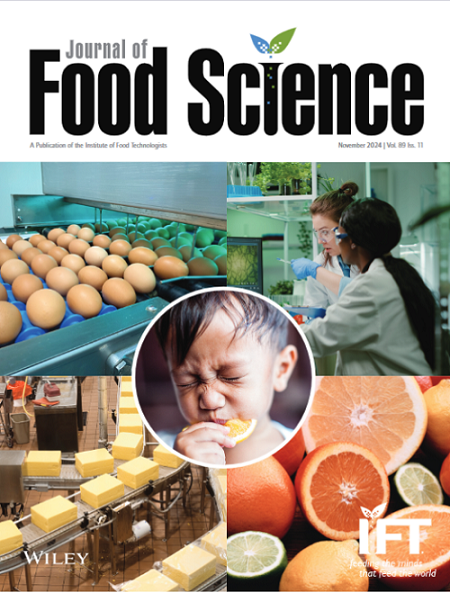Polyphenolic Profiles, Antioxidant and α-Glucosidase Inhibitory Activities of Three SmallFruited Apple Cultivars From Northeast China
Abstract
“Saiwaihong” (SWH), “K9” (K9), and “Longfeng” (LF), emerging small-fruited apple (Malus pumila Mill.) cultivars from Northeast China, enrich global apple germplasm and diversify fruit market offerings. However, their polyphenolic profiles and associated bioactivities remain poorly characterized. This study systematically compared the polyphenolic composition, in vitro antioxidant capacity, and α-glucosidase inhibitory activity (α-GIA) of peels and pulps from the three cultivars against the commercial “Red Fuji” (RF). Results revealed that total polyphenol (TPC), total flavonoid (TFC), and total flavanol (TFAC) contents followed the order SWH > RF > K9 > LF (p < 0.05), with peel more than double the levels in pulps across all cultivars. UPLC-Q-TOF-MS identified 25 polyphenols, including 5 phenolic acids, 7 flavan-3-ols, 10 flavonols, 2 dihydrochalcones, and 1 anthocyanin. SWH peels were rich in flavan-3-ols and dihydrochalcones, K9 peels dominated in flavonols, and LF pulps exhibited the highest chlorogenic acid levels. In all Trolox equivalent antioxidant capacities (TEAC, i.e., DPPH and ABTS radical scavenging activity, and ferric reducing antioxidant power) and α-GIA, SWH peels exhibited the highest levels, significantly surpassing the other cultivars. Principal component analysis confirmed significant inter-cultivar divergence in polyphenolic profiles (P < 0.05). Pearson correlations showed strong correlations (r > 0.7, p < 0.01) between TEAC, α-GIA, and TPC/TFC. Procyanidins, epicatechin, and phlorizin 2′-O-xyloglucoside emerged as key TEAC markers, whereas chlorogenic acid and quercetin glycosides were primary α-GIA markers. These findings underscored the potential of SWH, K9, and LF cultivars for developing polyphenol-enriched apple products with enhanced functional properties, providing a scientific basis for cultivar-specific quality assessment and nutraceutical applications.
Practical Applications
The phenolic composition, content, antioxidant activity, and α-glucosidase inhibitory activity of three cold-hardy small-fruited apple cultivars (Malus pumila “Saiwaihong,” “K9,” “Longfeng”) were systematically analyzed, which provides scientific data for the quality evaluation, precise development, and utilization of functional and nutritious dietary products and serves as a reference for the cultivation of cold-region apple cultivars and the diversification of market fruits.





 求助内容:
求助内容: 应助结果提醒方式:
应助结果提醒方式:


